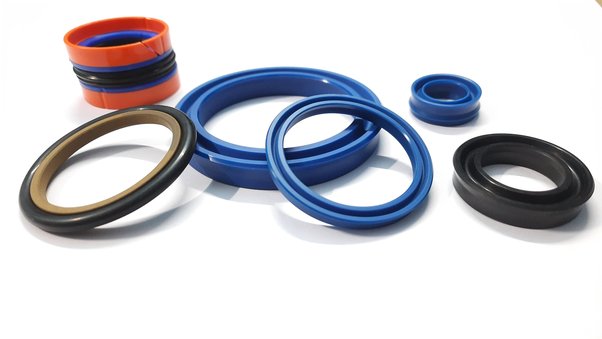Machinery maintenance is a crucial aspect of ensuring the longevity and efficiency of industrial equipment. One key element of machinery maintenance that often gets overlooked is seal clearance reductions. In this article, we will delve into the significance of seal clearance reductions in machinery maintenance and why it is essential for optimal performance.
Seal clearance reductions refer to the process of minimizing the gap between moving parts and their seals within machinery. This is important because proper seal clearance helps prevent leaks, contamination, and premature wear on components. By reducing clearance, friction and vibration can be minimized, leading to improved efficiency and extended equipment life.
When seal clearance is too large, it can result in lubricant leaks, allowing dirt and debris to enter the system, causing damage and reducing performance. Additionally, excessive clearance can contribute to increased energy consumption and decreased overall productivity.
Regularly monitoring and adjusting seal clearance is vital in preventing costly breakdowns and ensuring smooth operation of machinery. Maintenance schedules should include routine checks of seals and clearance levels to identify any issues early on before they escalate into major problems.
Seal clearance reductions are a critical aspect of machinery maintenance that should not be overlooked. By keeping clearance levels in check, industrial equipment can operate at peak performance levels, leading to increased efficiency, reduced downtime, and ultimately, cost savings for the business.
Understanding Seal Clearance
Seals play a vital role in preventing leakage and contamination in machinery. Seal clearance refers to the space between the seal and the mating component. When the clearance is too large, it can lead to issues such as oil leakage, dust ingress, and reduced efficiency. Therefore, reducing seal clearance is necessary to maintain the proper functioning of the machinery.
To reduce seal clearance, precision machining of components is essential to ensure a proper fit between the seal and mating component. Additionally, selecting high-quality seals that are designed to withstand varying operating conditions can help in preventing leakage and contamination.
Regular maintenance and inspections of seals are also crucial to detect any potential issues early on and avoid costly downtime. Proper lubrication of seals can also help in reducing friction and wear, ultimately extending the lifespan of the seals and improving overall machinery performance. By focusing on reducing seal clearance and implementing proper maintenance practices, businesses can ensure their machinery operates efficiently and effectively for longer periods.
Benefits of Seal Clearance Reductions
There are several benefits to reducing seal clearance in machinery. Firstly, it helps improve the overall efficiency of the equipment. By minimizing the gap between the seal and the mating surface, friction is reduced, leading to lower energy consumption and increased productivity.
Secondly, a reduced seal clearance also enhances the sealing effectiveness, resulting in better protection against contaminants such as dust, dirt, and moisture. This can extend the lifespan of the machinery and reduce the need for frequent maintenance or repairs.
Additionally, tighter seal clearance can contribute to a quieter operation by minimizing noise generated due to vibration or fluid leakage. Overall, reducing seal clearance in machinery offers improved performance, longevity, and operational efficiency.
Prevention of Contamination
Another crucial benefit of seal clearance reductions is the prevention of contamination. In industries where cleanliness is paramount, such as food processing or pharmaceuticals, any form of contamination can have severe consequences. By reducing seal clearance, the risk of foreign particles entering the machinery is significantly decreased, ensuring product quality and safety.
Another important advantage of reducing seal clearance is the prevention of contamination. In industries like food processing or pharmaceuticals where hygiene is critical, any type of contamination can lead to serious repercussions. By minimizing seal clearance, the likelihood of foreign substances infiltrating the equipment is greatly reduced, guaranteeing the quality and safety of the products.
Enhanced Equipment Longevity
Proper seal clearance reductions can also contribute to the longevity of the machinery. When seals are constantly subjected to excessive clearance, they wear out faster, leading to frequent replacements and downtime. By reducing the clearance, the seals experience less wear and tear, prolonging their lifespan and reducing maintenance costs in the long run.
Optimized Performance
Optimizing seal clearance can result in improved performance of the machinery. With reduced friction and wear on the seals, the equipment can operate at its full potential without being hampered by clearance issues. This can lead to smoother operation, higher output, and better overall performance of the machinery.
Challenges and Considerations
While seal clearance reductions offer numerous benefits, there are also challenges to consider. One of the main challenges is finding the optimal clearance size for each specific machinery and application. It requires a thorough understanding of the equipment, as well as careful calculations and testing to determine the ideal clearance for maximum efficiency.
Conclusion
Seal clearance reductions play a vital role in machinery maintenance and are essential for ensuring optimal performance, preventing contamination, enhancing equipment longevity, and optimizing overall efficiency. By paying attention to seal clearance and taking the necessary steps to reduce it, industries can reap the benefits of improved productivity, reduced downtime, and cost savings in the long term.
Stay in touch for more updates and alerts visit: Hint Insider!




